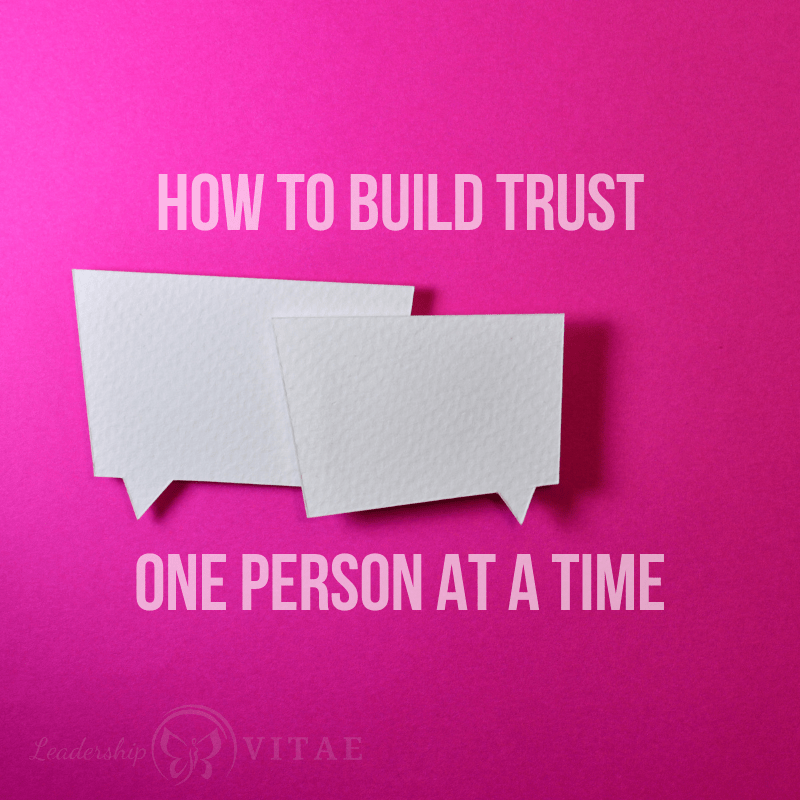
When I arrived at my current company a little over two years ago, I began to meet a slew of new people, in a new industry, with a completely new culture (both in the company and the South).
There were some elements of the company culture and people that felt like an immediate fit. Others have taken a lot more time and investment.
Everyone is familiar with teams going through the stages of forming, storming, norming and performing. Building a new division, teams, and roles in the organization meant a lot of forming. We had to come together to build new solutions in new ways, which also meant storming was inevitable.
What we didn’t foresee was that norming wasn’t going to come with time. Not without intention. In the case of my peer group, we were stuck in storming mode for a long time. We stayed there until we got help to identify and address what was holding us back.
Naming the dysfunction
Many years ago, I was introduced to Patrick Lencioni’s work. I love the fables, bringing leadership models to life in fictional format. Though I had read his work, and internalized a lot of it, I didn’t recognize what was happening to our team. I was “in it” and having difficulty stepping back to see the broader patterns.
The book “The 5 Dysfunctions of a Team” may be fictional, but it was hugely relevant to where we found ourselves. Our coach used a model based on the book, to help us introduce the 5 behaviors of a high performing team, the alternative to the 5 dysfunctions.
In the model, and the reality we’ve found, trust is the foundation for everything else. Without trust, it is impossible for any team to perform optimally.
It took us days of deep discussion, and being vulnerable with one another, to begin breaking down barriers. In the days and weeks that followed, we worked through the other levels of the model, but trust continues to be the one building block that determines the health of our relationships and our organizations’ performance.
Building organizational trust
While we were together, we identified what a trusting team would look like. Those behaviors that we could identify, and call out if necessary, that would either build or erode trust in the group.
Since then, we’ve been using those behaviors in our group sessions to keep us on track. To remind ourselves of the importance of trust, and continue building it with intention.
We have been so committed to this process that we wanted to extend it beyond our core team, into the broader organization. We’ve started helping our leaders understand the 5 behaviors, introducing new language and giving insight into how we’re trying to operate.
As we talk more openly about the 5 behaviors, it has revealed opportunities to go deeper. To have different types of conversations outside of our meetings and with our own teams.
It’s highlighting that trust is built one interaction at a time – in every interaction. It’s not just in team meetings or group settings. It starts with the first conversation with someone, potentially even before, and either builds or erodes with every subsequent interaction.
Thinking about an organization of hundreds of individuals, that’s a lot of building and eroding going on. Each of us can take steps to intentionally building trust, rather than leaving it up to chance in our interactions. Which, unfortunately, is what many of us likely do.
Losing my marbles
As the leaders in my organization begin to read and learn about the 5 dysfunctions and behaviors, we’ve started talking more deliberately about trust.
During a conversation with one of my directs, we began talking about what trust looks like for us. He said “Kristin, I trust you implicitly. I don’t think we have an issue.”
While I appreciated the sentiment, I pushed a bit. I shared an analogy I recalled about trust being like a jar of marbles. At the time, I couldn’t remember who it came from. Of course it came from Brené Brown!
I explained that from the day we met, there’s a jar between us. As positive interactions occurred, marbles were deposited in the jar. If there were negative interactions, the marbles came out. Possibly, there were a bunch of IOU’s that were put in their place.
Because we never talked about trust explicitly, we’ve been blindly building and eroding it in every interaction. I told him I’d like to know what trust looks and feels like to him, and share what it looks and feels like to me, so we can protect and add to the marbles we’ve been able to put in our jar.
He really liked the analogy and started sharing some things that have been challenging over the last 2 years. They are things I’ve improved or changed, but maybe without the urgency and intention I could have had.
Based on this conversation, now I know and can be mindful of pitfalls. We talked about what it might look like if I fell into that kind of behavior again – how might he help me shift course so the result is something that is more comfortable for him?
The goal is to build trust deliberately, rather than by accident. That only happens if we each understand each other’s perspectives.
One person at a time
Following the rollout of the 5 behaviors across our teams, my peers and I have started talking more about our next level of maturity. Adding check points on trust (and conflict…which only happens in a health way with high levels of trust) to our 1×1’s is on the list.
I think having open conversations about trust can and should happen in all areas of our lives. We can have them with our friends and family…not just coworkers.
As leaders, however, I think it’s even more important to be deliberate about those conversations, rather than assume trust will build over time. Nothing positive and repeatable happens by accident. It happens with intention.
Storming may be a necessary step in the evolution of any team. However, a storm is much easier to navigate with those we trust, whether it’s to take their turn at the wheel or guide the journey.








